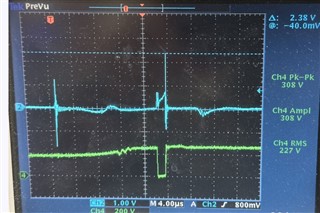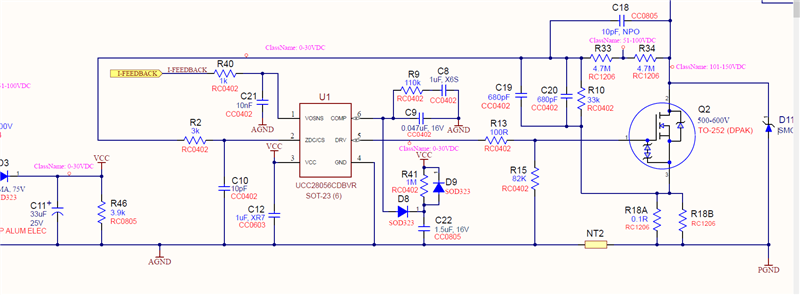Hello TI Team,
We are using the UCC28056CDBVR in our design and experiencing an issue where overcurrent protection (OCP) randomly activates during 3kV surge testing.
The problem is that OCP subsequently triggers OVP2, which activates a safety mechanism that blows the secondary fuse whenever the load gets disconnected.
Due to this, the fuse is blowing during surge hits.
Design Details:
- CS Resistor (Rcs): 0.1Ω
- RC Filter on CS Pin: 3kΩ + 10pF
- Issue Observed: High-frequency noise on the CS pin (oscilloscope image attached).
Scope Setup:
- Blue waveform: Voltage across Rcs
Key Observations:
- The CS pin exhibits high-frequency spikes
- Despite the internal 150ns leading-edge blanking (LEB), these spikes seem to cause false OCP triggering.
- OVP2 activation leads to load disconnection, resulting in fuse failure.
- Increasing Rcs is not an option as it impacts other tuned performance paramters.
- Soft start adjustments are constrained by the startup time requirement.
Questions:
- How can we prevent random OCP2 activation during surge transients?
- Is there a way to disable or modify OVP2 behavior to avoid fuse blowing?
Attachments: Oscilloscope capture of CS voltage spikes.
Thanks in advance!



